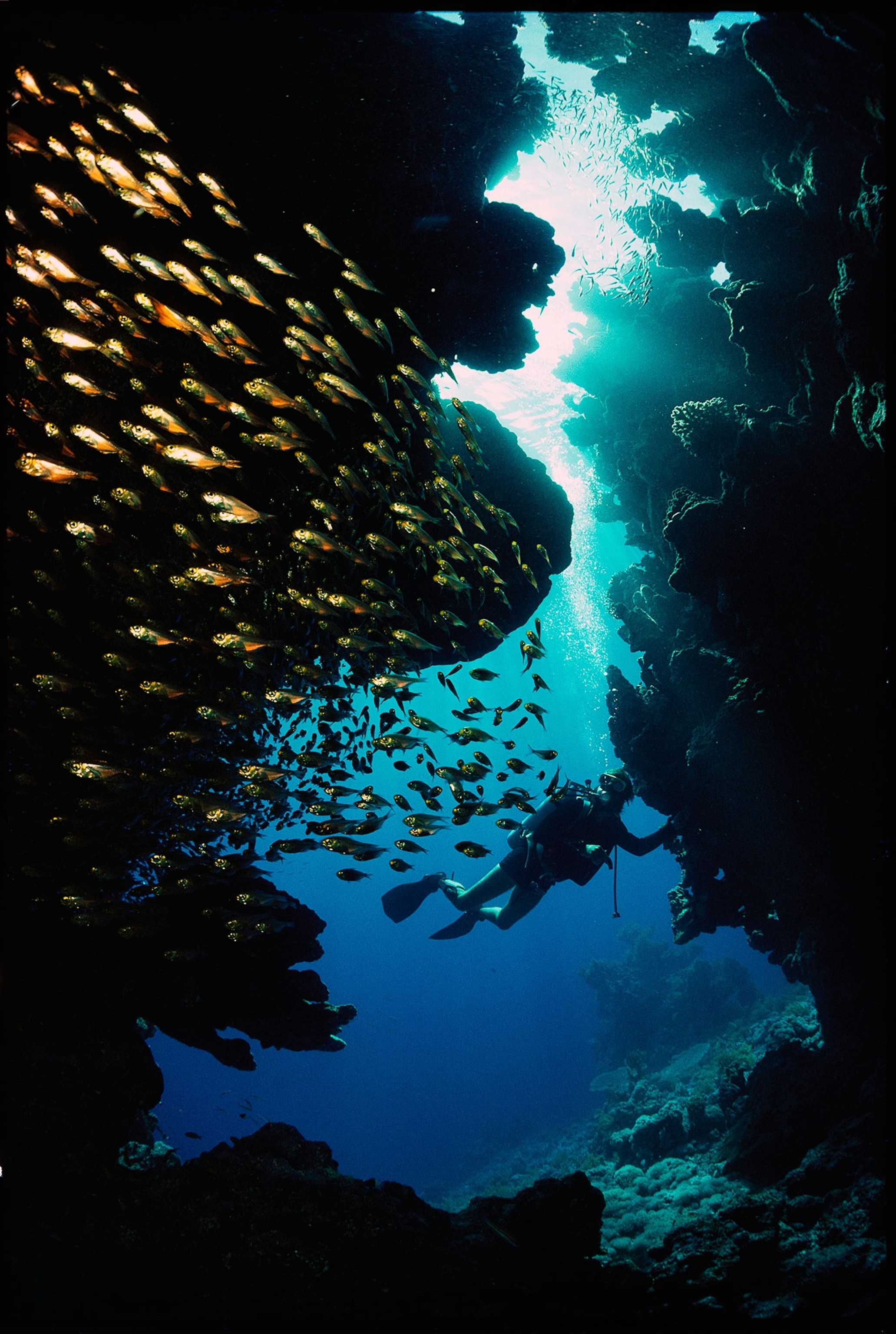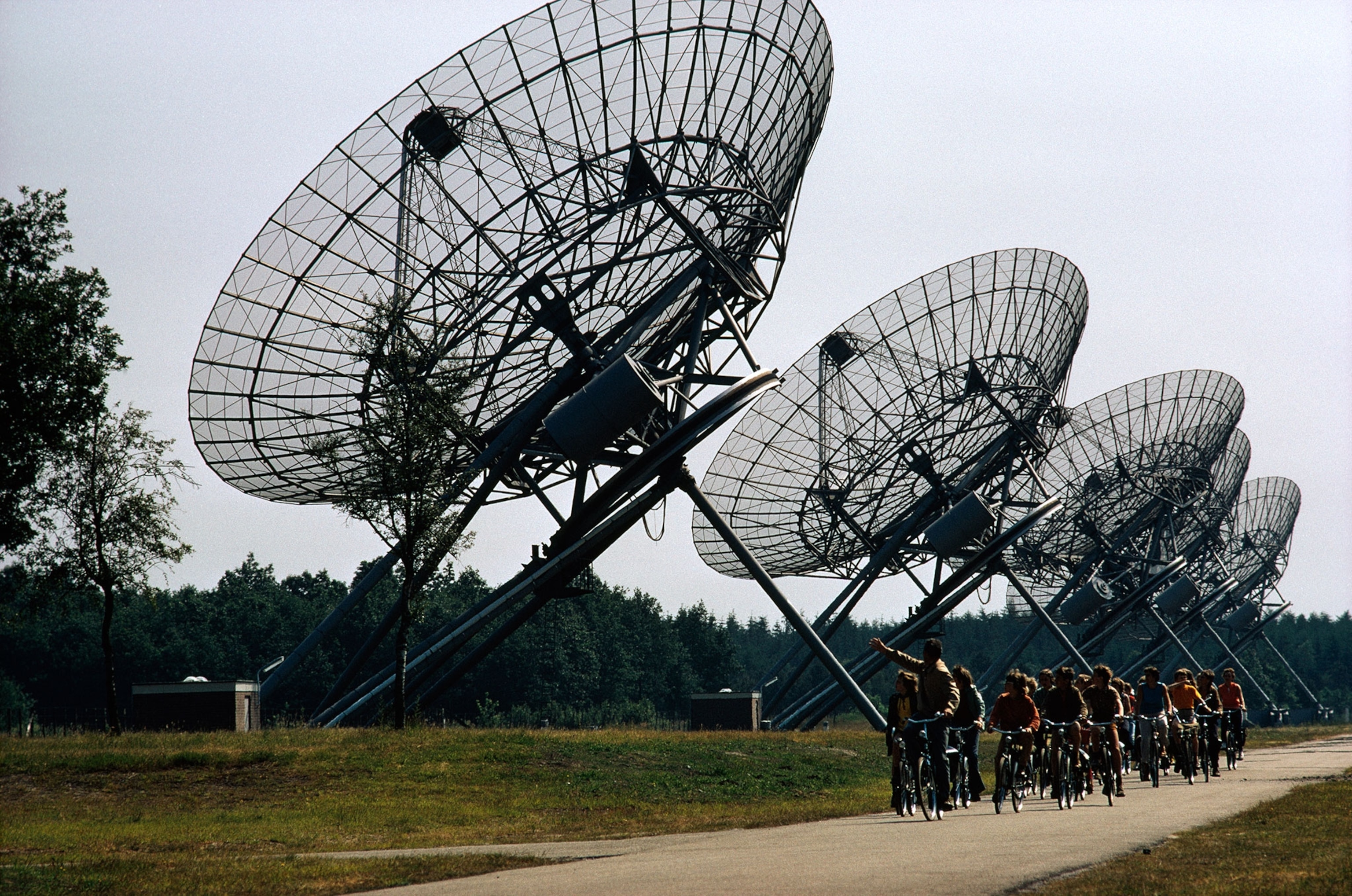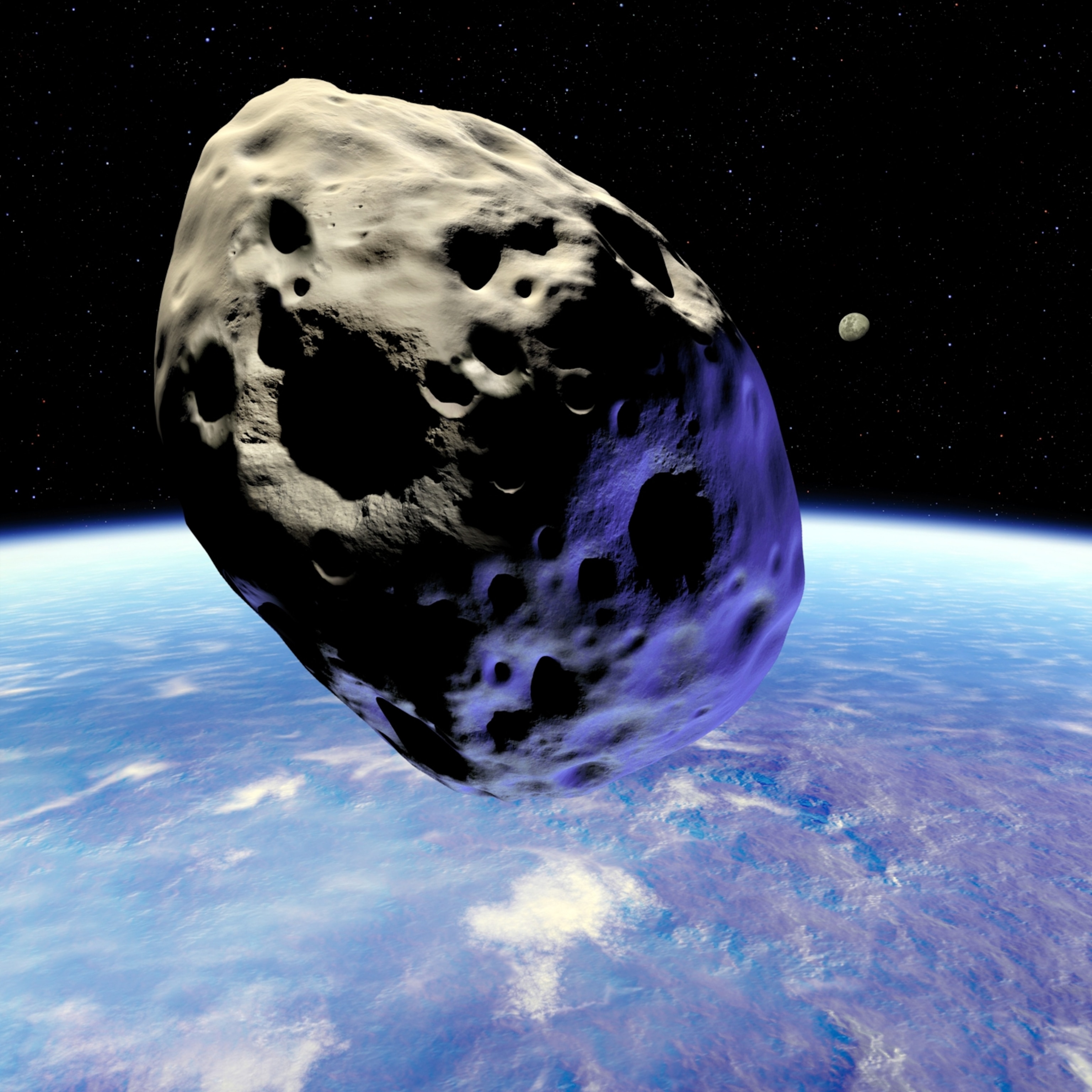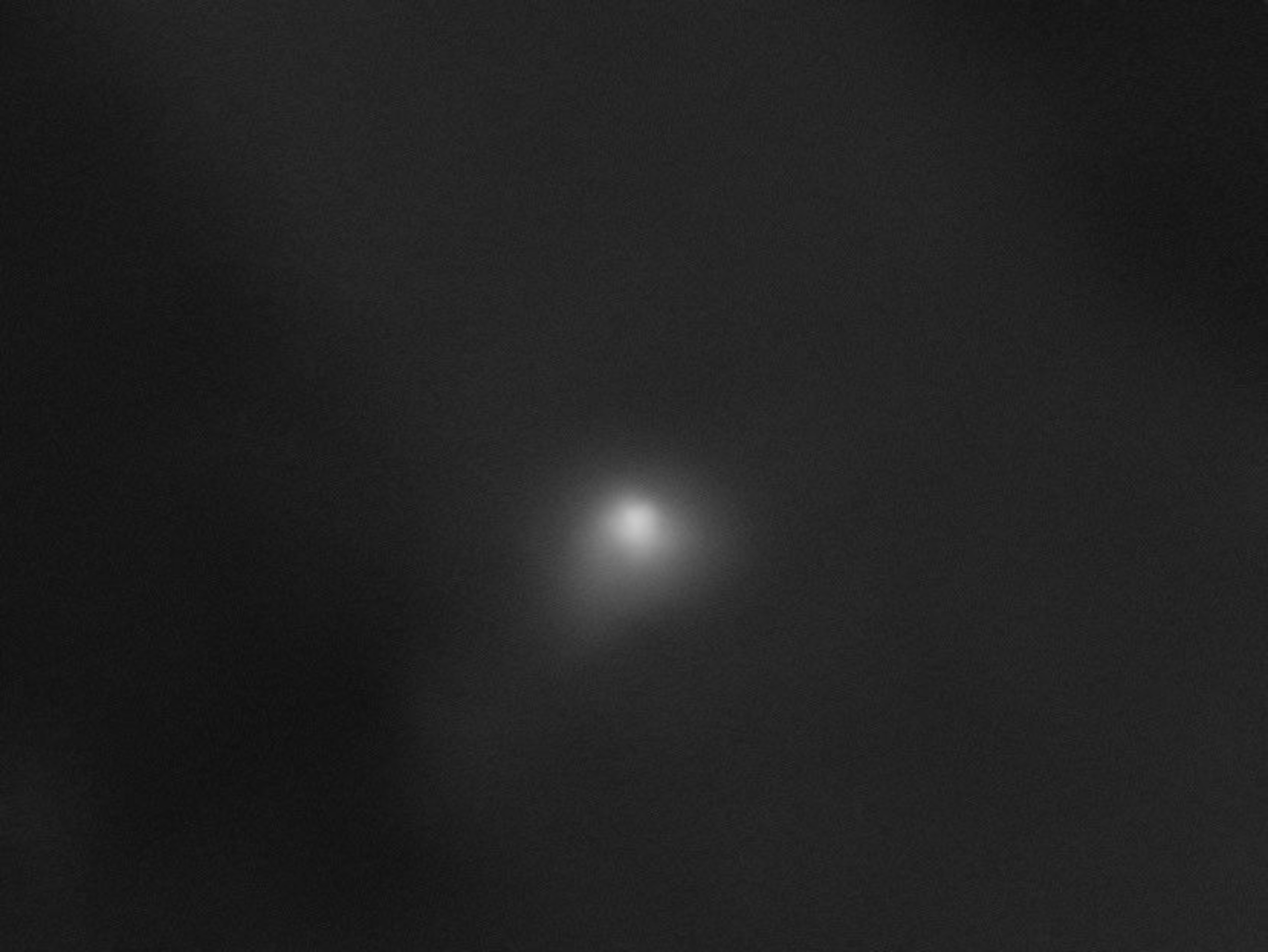
10 National Geographic Photos That Explain Earth to Extraterrestrials
How did this photograph of Jane Goodall end up in outer space?

In August and September of 1977 the twin spacecraft Voyager 1 and Voyager 2 were launched. Their mission was to explore our solar system “from Jupiter to Neptune” before eventually leaving it—heading into interstellar space and to the truly unexplored beyond. Fixed to each spacecraft was a gold-coated record containing information about life on Earth—like a message in a bottle for any intelligent life that might discover it.
The record contained, among other things, an audio montage titled “Sounds of Earth,” Beethoven’s Cavatina, greetings in 54 languages, and, most importantly to us, photographs that visually communicate facts about the physics, biology, sociology, and beauty of the pale blue dot we call home.
Originally the team (chaired by Carl Sagan) planned to include six photos: “The Earth, the DNA molecule, and a few shots of humans and animals.” But the images, which were converted into sound and written on the record, took up less space than anticipated. The capacity increased nearly 20-fold and 118 photos were included.

Every image chosen had to communicate as much information as possible as clearly as possible in order to be understood without any context. A list of subjects was compiled by astronomer Frank Drake. Sagan then tasked his artistic collaborator, artist Jon Lomberg, with curating the image sequence, a role he took very seriously.
“I found myself increasingly playing the role of extraterrestrial,” he says, “a mental exercise I had done in fun for many years (while playing Frisbee, for example, I’d ask myself, What would ETI make of this?). Only now it was in earnest. I would look at pictures and try to imagine that I’d never seen the subject before. How could the photograph be misinterpreted? What was ambiguous? How could scale be deduced?”
Lomberg and the team had only six weeks from start to finish to agree on the image edit, clear the rights, and actually fabricate the disc that would be used. In those six weeks they developed their “go to” image sources: the United Nations, Time, Sports Illustrated, NASA, and, most notably, National Geographic.
“Of the greatest assistance was the National Geographic Society,” Lomberg says in Murmurs of Earth, the handbook explaining anything and everything Golden Record-related. “In a way, they do routinely and on a larger scale what we were trying to do—give a full picture of Earth and its inhabitants.”
In 2012, Voyager 1 entered interstellar space, carrying photos of our world with it. But even if our message never meets the eyes of extraterrestrials (or whatever sort of sensory receptors they might have), Lomberg considers Voyager and its message a huge success. “As long as the space program is remembered,” he says, “people will remember that we made this thing that tried to show Earth for aliens, and it’s out there, two of them are out there, and getting further from us with every passing hour.”
So without further ado, here are ten of the National Geographic images that are, at this very moment, hurtling through space. Each photo is followed by the rationale for its inclusion on the record, as excerpted from Lomberg’s Murmurs of Earth.

Sagan, [Frank] Drake and I are all enthusiastic scuba divers, and we wanted some good underwater shots. But as we were looking through pictures of reefs and fish, we realized there was no way one could tell for certain that the scene was underwater. The most unambiguous way of showing an underwater scene was to have a diver present, since the air bubbles rising from the regulator should furnish clear evidence of the aqueous medium. In addition, the presence of the diver would show that human beings were interested in exploring and adapting to various environments. It is no accident that many space buffs (including science-fiction writers and astronauts) are scuba divers. The weightlessness, the life-support system, and the complex and gorgeous world of the reef seem a preview of interstellar exploration. It’s as close as most of us can ever get. This photograph was taken in the reefs of the Red Sea off Na’ama Bay in Sinai.—Jon Lomberg, Murmurs of Earth

This picture shows our near relatives being observed by two scientists, one of them the famous Jane Goodall. From the point of view of an extraterrestrial, chimps and human beings may be nearly identical—it seems likely that pictures of chimps dressed in cowboy suits would pass unnoticed by extraterrestrials. More human beings, they’d probably think. The fact that the human beings in this picture are studying the chimps may be a weak clue that the latter aren’t members of the race that made Voyager. On the other hand, it might appear that the chimps are the masters because the human beings are toting the gear. But we couldn’t leave out the primates. Also, the background shows a kind of vegetation not seen elsewhere: jungle growth.
This photograph was taken by Jane Goodall’s mother, Vanne Morris-Goodall. When we wrote her that we wanted to use the picture, she replied: “I am completely overawed by the knowledge that I once pressed the button for a photograph which is now on its way to outer space, and still more so because my daughter, Jane, has merited the unique honor of representing an area of study on the planet Earth.”—Jon Lomberg, Murmurs of Earth

The growth on the trees has fallen off, and a human being seems to be collecting or raking it. The fact that the fallen leaves have changed from the green color seen in the leaves of other trees might indicate to the recipients this tree’s deciduous nature, and perhaps even something about the existence of several different photosynthetic pigments.—Jon Lomberg, Murmurs of Earth

This was another suggestion made by Philip Morrison [ a scientist who helped compile the Voyager Records]. The Great Wall is one of the most tremendous engineering achievements of man, and it is also a product of one of the oldest and most important human cultures. It was difficult to find a shot that showed both the scale of the wall and a view of it close up. The National Geographic Society helpfully provided us with a number of photographs to choose from.—Jon Lomberg, Murmurs of Earth

This picture provides a clear presentation of human facial features and hands, and some suggestion of the complexities of dress and ornamentation found in most human cultures.—Jon Lomberg, Murmurs of Earth

This represents the skyline of a modern city, showing skyscrapers. From the sailboats on the river it may be deduced that we like to live along rivers and coasts and that we use them for transportation (again emphasizing the importance of water on our planet and in our culture).—Jon Lomberg, Murmurs of Earth

To humans, this picture embodies the pride of parenthood. For us selecting it, it was a source of pleasure for additional reasons. You can see everything—the man’s ears (amazing how many pictures do not show ears) and teeth (ditto teeth); the child’s toes. The man’s eyes are directed toward the child (a girl, by the way), while the child looks at the camera—a clue that, along with other pictures, might suggest that eyes are organs of vision. Their possible motion is clearly shown here. The muscles in the man’s arm are well-defined. The skin tones show perfectly. And it is a beautiful, well-composed picture to boot.—Jon Lomberg, Murmurs of Earth

An interferometer is an array of radio antennas that can function as a single telescope. Here a group of humans on bicycles [recognizable from another picture on the record] is sightseeing. Like a suspension bridge, the shape of the disk antenna is determined entirely by the job it must perform, and so it should be recognized by the radio astronomers of another species.—Jon Lomberg, Murmurs of Earth

This contains a lot of information about aeolian processes and dust-transport mechanisms in arid regions. A rider and his dog leave their tracks in the sand. We were afraid that the rider might be mistaken for a centaur. Later pictures make it clear that we have animals like horses and that we ride them … This is one of three pictures [on the record] that show dogs accompanying human beings. We hope the recipients will guess that dogs are our friends.—Jon Lomberg, Murmurs of Earth

We felt that at least one picture ought to be chosen purely for its beauty, to say nothing more than how lovely our planet is. A sunset seemed a good choice. But I might point out that the reddening of light contains information about our atmosphere, and the silhouetted birds show the mechanism of avian flight.—Jon Lomberg, Murmurs of Earth
Want to know more about Voyager? Explore more in this interactive feature.
Voyager isn’t the only spacecraft to contain a message for extraterrestrials. The spacecraft Pioneer 10 and Pioneer 11 launched in 1972 and 1973 contained pictorial messages for possible recipients providing information about the origin of the spacecraft.
There is now an effort underway to raise funds to upload a message digitally to the New Horizons spacecraft, which was launched in 2006 with the mission to explore Pluto and the Kuiper belt.
Thanks to Vincent J. Musi for sparking an interest in this topic at the 2016 National Geographic Photography Seminar.








